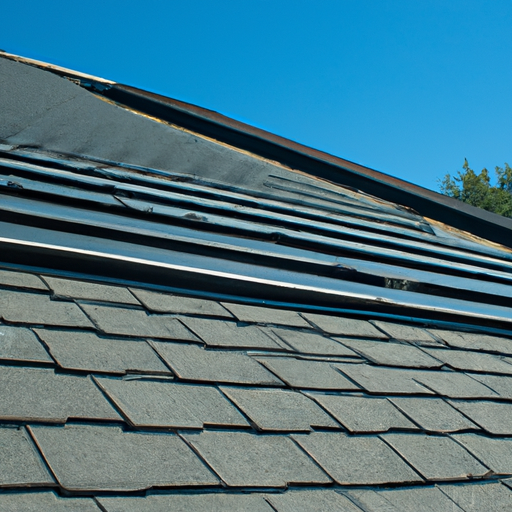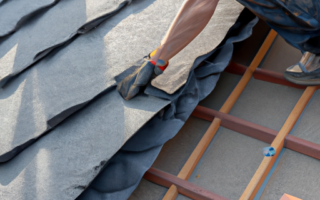Roof Construction 101: A Beginner’s Guide to Understanding the Basics
Roof construction is a crucial aspect of every building, as it not only provides protection from the elements but also contributes to the overall aesthetic appeal. If you’re new to the world of construction or simply interested in learning more about the basics of roof construction, you’ve come to the right place. In this beginner’s guide, we’ll cover the essential aspects of roof construction and ensure you have a solid understanding of the fundamentals.
Types of Roofing Materials
Before delving into the construction process, it’s important to familiarize yourself with the various types of roofing materials commonly used in the industry. Each material has its own advantages and considerations, so you’ll need to choose one that suits your specific needs. Some popular options include asphalt shingles, metal roofing, clay tiles, and composite materials.
Structural Components
To comprehend the roof construction process, it’s essential to understand the basic structural components. Major elements include:
* Roof Trusses: These are the framework supporting the roof’s weight and transferring it to the walls. They are typically made of wood or metal.
* Rafters: These are inclined beams that form the main framework of the roof. They support the weight of the roof covering.
* Roof Decking: This is the base layer of the roof that provides a solid surface for the roof covering to be attached to. Common materials for decking include plywood and oriented strand board (OSB).
The Roofing Process
The process of roof construction involves several steps:
1. Planning: This stage involves determining the size, shape, and type of roof suitable for the building. Accurate measurements and calculations are essential.
2. Preparing the Roof Decking: The selected roof decking material is installed on the rafters or trusses, creating a stable foundation.
3. Installing Underlayment: A waterproof or moisture-resistant membrane, known as the underlayment, is applied to the roof deck before the final roof covering.
4. Applying the Roof Covering: The final step includes installing the chosen roofing material, whether it’s shingles, tiles, or metal sheets. This is what provides the desired appearance and protection.
Main Considerations
As with any construction project, there are a few important considerations to keep in mind during roof construction:
* Local Building Codes: Ensure that your roof construction adheres to the local building codes and regulations.
* Weather Conditions: Consider the climate and weather patterns in your area when choosing roofing materials and designing the roof structure.
* Hiring Professionals: Roof construction can be complex and dangerous, so it’s advisable to hire experienced professionals for the job.
Understanding the basics of roof construction is crucial before embarking on any roofing project. By having a solid foundation of knowledge, you’ll be better equipped to make informed decisions and ensure a successful outcome. Whether it’s a residential or commercial building, a well-constructed roof is vital for long-term durability and protection.
Advanced Techniques and Materials for Modern Roof Construction: A Comprehensive Overview
When it comes to modern roof construction, advanced techniques and materials are revolutionizing the industry. The use of innovative products and methodologies not only enhances the durability and longevity of roofs but also improves their energy efficiency and aesthetic appeal.
One of the key advancements in roof construction is the utilization of green roofing materials. Green roofs, also known as living roofs or eco-roofs, consist of a vegetative layer planted on top of a waterproofing membrane. These roofs offer numerous benefits, including improved insulation, reduced stormwater runoff, and enhanced air quality. Furthermore, they can naturally absorb and filter pollutants, reducing the environmental impact of buildings.
Another exciting development in modern roof construction is the emergence of cool roofing materials. Cool roofs are designed to reflect more sunlight and absorb less heat compared to traditional roofs. By doing so, they help reduce the energy consumption needed for cooling. These materials are typically light in color and have high solar reflectance and thermal emittance properties.
Advances in technology have also led to the increased use of lightweight and flexible roofing materials. These materials, such as metal roofing and synthetic membranes, offer excellent resistance against extreme weather conditions, including strong winds and heavy rain. Moreover, their flexibility allows for easier installation and reduces the need for structural reinforcements.
Additionally, the use of advanced insulation materials has become prevalent in modern roof construction. Insulation plays a critical role in maintaining a comfortable indoor environment and reducing energy loss. High-performance insulation materials, such as spray foam and rigid foam boards, offer superior thermal resistance and prevent air leakage, resulting in improved energy efficiency and cost savings.
With the rise of sustainable building practices, many modern roofs are now incorporating solar panels. Solar roofing systems harness the power of the sun to generate electricity, reducing dependence on traditional energy sources and lowering utility costs. These systems can be seamlessly integrated into the roof design, making them aesthetically pleasing and environmentally friendly.
Lastly, the use of advanced roofing techniques, such as prefabrication and modular construction, has significantly improved the efficiency and speed of roof installation. Prefabricated roof components are manufactured off-site and then transported to the construction site, minimizing on-site labor requirements and potential errors. Modular construction involves assembling standardized roof modules, allowing for faster installation and greater flexibility in design.
In conclusion, advanced techniques and materials are transforming the landscape of modern roof construction. From green roofs and cool roofing materials to lightweight options and advanced insulation, these innovations are revolutionizing the industry. Incorporating sustainable practices and leveraging technological advancements can help create roofs that are not only durable and functional but also environmentally friendly and energy-efficient.



